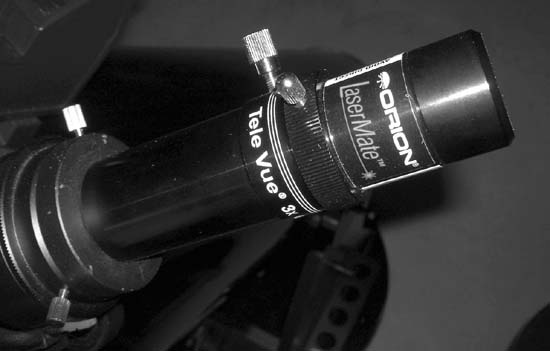Collimate Your Primary Mirror Quickly and Accurately
Use a Barlowed laser to show the error of the primary only, taking the secondary out of the equation.
In the January 2003 issue of Sky & Telescope magazine, Nils Olof Carlin describes a simple and accurate method of collimating the primary mirror of a Newtonian reflector. Carlin’s method uses a laser collimator and Barlow lens in combination, as shown in Figure 3-20.

Figure 3-20. Insert the Barlow between the laser collimator and the focuser
The new method is preferable in several ways to the standard one in which the laser collimator is used alone. The most striking improvement is that the new method is insensitive to collimation errors of the other elements in the optical path, namely the secondary and the focuser. These should have been collimated before the tilt of the primary is adjusted, of course, but decoupling the primary from the other elements vastly simplifies the final part of the work, namely, adjusting the primary mirror.
Carlin’s method, like the standard one using a simple laser collimator, involves inspecting the light coming back from the primary. In both cases, the reflected light returns to a target, and the tilt of the primary is adjusted until the return beam is centered on this target. With the usual method, the target is the face of the laser, and the narrow return beam must be centered on the hole in the ...
Get Astronomy Hacks now with the O’Reilly learning platform.
O’Reilly members experience books, live events, courses curated by job role, and more from O’Reilly and nearly 200 top publishers.

